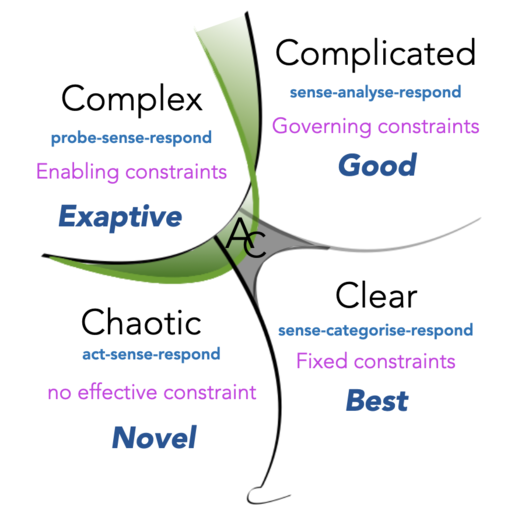Here we are, at week 3 of the SRTP Foundations course. This week in SRT class we are going to be focusing on disruptive tech. I guess it is probably best to start with a discussion of what actually is disruptive tech. According to many website (so it must be true), disruptive tech was a term coined in an HRB article way back when, and it roughly means.
“… is an innovation that significantly alters the way that consumers, industries, or businesses operate. A disruptive technology sweeps away the systems or habits it replaces because it has attributes that are recognizably superior” (from: https://www.investopedia.com/terms/d/disruptive-technology.asp )
When you I did some searching on what is considered disruptive technology, the usual ones came up in the mix. They include:
- generative AI
- AR/VR
- IOT
- Edge Computing
- 5G
- Blockchain
Most of the pre-reading this week focused on trying to balance disruptive technologies with the principles of responsible tech. This included the debate between regulation and innovation, and a discussion on harms (more specifically online harms).
As I was doing the pre-reading, I started to wonder if maybe the Cynefin framework could help us better understand where to focus our efforts and maybe the types of approaches we would use to help understand the effects of disruptive technology.

Roughly speaking, the domains on the right are considered ordered, and the ones on the left are considered disordered. Within each domain, a different approach to solution finding is proposed and this is because the nature of the systems under test are fundamentally different. There are no context free solutions, so the first step in this decision making framework is to first understand what domain you are in, and then apply the appropriate decision making tools/processes.
Making a pretty weak attempt to map “innovation” onto this framework, I can think of two axis by which we could evaluate. The first is about the step change from existing technology in the field. Sometimes innovation (even disruptive innovation) occurs because of minor step-changes on-top of existing technology that changes the balance of the trade-offs of that technology. More likely (at least in the context of disruptive innovation) this has occurred because of radical repurposing, or exaptation. On the Cynefin framework, minor step-changes would likely fit into the ordered side of the house, whereas exaptation fits into the disordered side of the house.
The second axis I can think about is the range of possibilities (or speed to outcome) that the technology changes. Thinking of something like VR for simulation for example, a digital environment allows for rapid iteration on whatever concepts which speeds the outcomes. Generative AI in the pharma space is a great example here. At the point of writing here, I’m uncertain how to scale or measure this effectively, but for the point of this discussion, it is only important to know that if a scale could be created, it would likely mean that some technology would fall ordered, and other would fall disordered.
Cool story Mr. Ninja, so what? I think the point that I am trying to make here is that we can use the Cynefin framework to figure out how we should be looking at regulating the disruptive technology. Let’s take the example of 5G. While super cool (in terms of some of the possibilities that this opens up) it ultimately isn’t a huge change from the 4G technology we currently have. Before you jump all over me, I am well aware I am taking a very very simplistic view, but this is just an example, so calm down. In the case of 5G, let’s call it, for sake of argument, complicated. This means that there are several steps that need to be followed (and it needs to involve experts) but ultimately we have good practices here for managing this new technology. Do reviews, ensure safety, double-check implementation, etc. But barring anything major from the standard reviews we would do, there shouldn’t be many hurdles here.
Let’s consider another example, autonomous vehicles. Again, oversimplifying, one could say that autonomous vehicles are a combination of many “disruptive technologies” put together. This includes AI (or rather, machine learning), edge computing, IOT stuff, and probably others. For the sake of argument, let’s consider this radical repurposing or exaptation. This would put this into the complex domain within Cynefin. In the Cynefin framework, the decision making process here would be probe –> sense –> respond. Okay, so from a regulation’s standpoint, we will never “know” completely at regulation time all the outcomes that could come of this technology. This means that we need to design regulator mechanisms that allow for exaptive practices. Obviously, we still need to balance risks with positive outcomes, but how we understand those risks has to be done differently. Regulations can aim to create constraints in such a way that allows for safe exploration of the new technology and have checks to ensure the regulation evolves with the technology.
Conclusion
Listen, I’m not saying any of the above made any sense. What I think I am saying is that there are no context-free solutions, and that goes for applying tech principles to evaluate the responsibility or ethicality of tech. The point is that, depending on the domain we are in, the answers are not known, and therefore cannot be evaluated in totality. We need to then design processes that allow us to safely find the answer and co-evolve regulation and other safeguards with the technology, constantly monitoring for desired outcomes.
